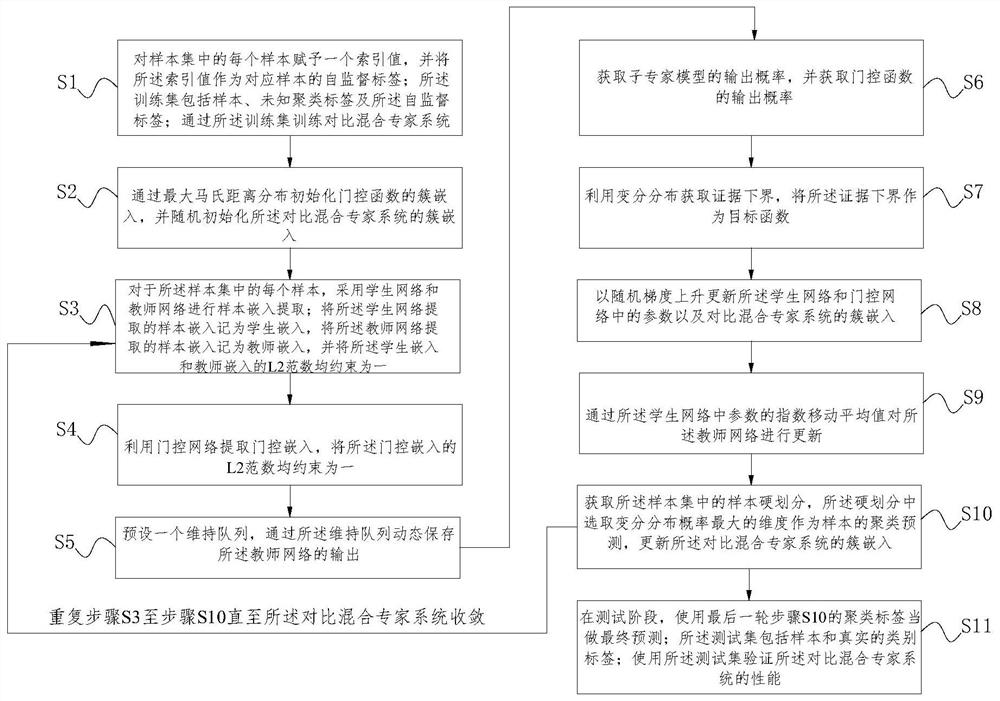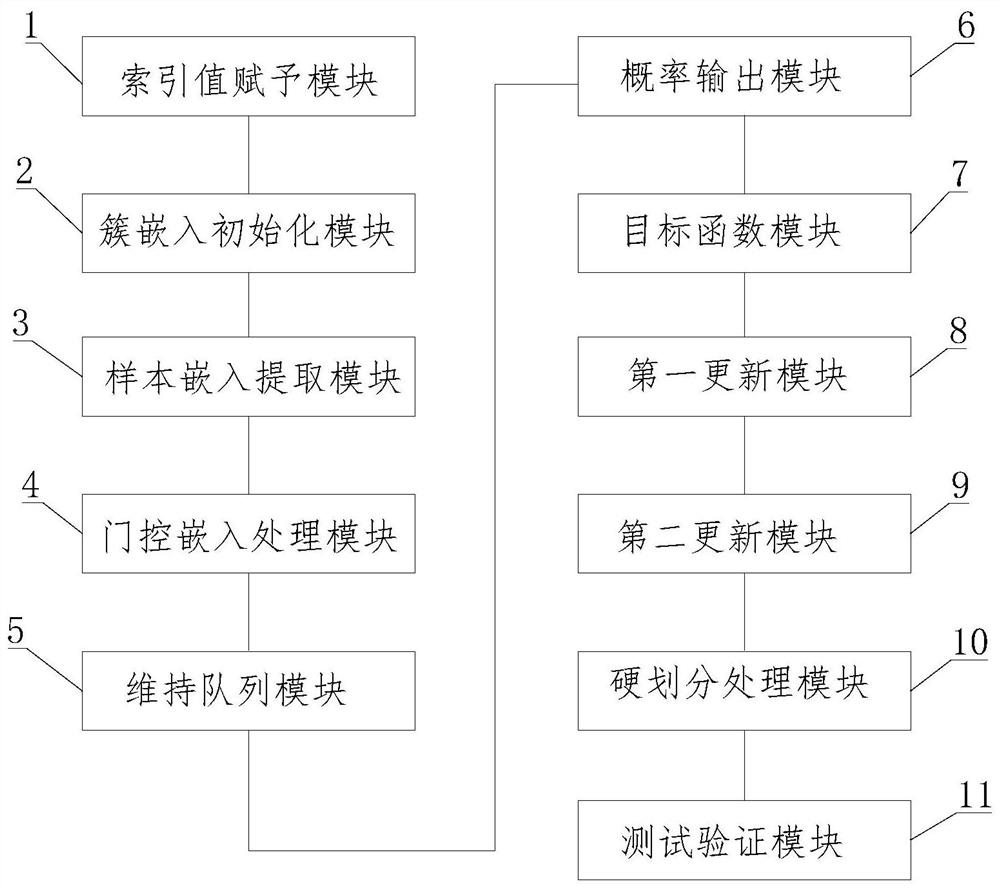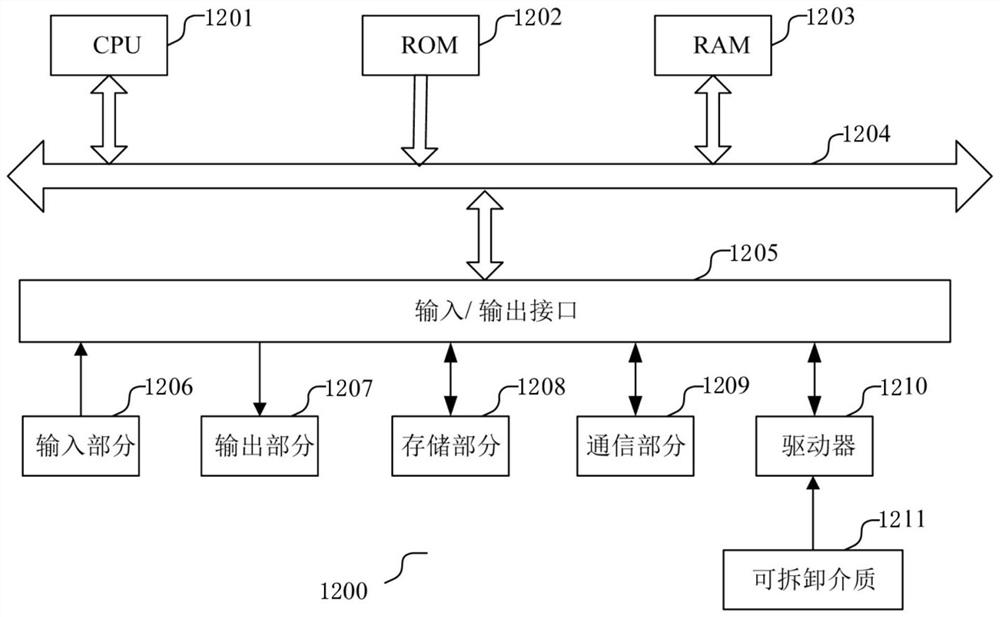Image depth clustering method and system based on self-supervised contrast learning
A technology of image depth and clustering method, applied in the field of machine learning, can solve problems such as poor performance, wasting model performance, limiting model discrimination, etc., achieve strong discrimination, high cosine similarity, and prevent clustering degradation.
- Summary
- Abstract
- Description
- Claims
- Application Information
AI Technical Summary
Problems solved by technology
Method used
Image
Examples
Embodiment 1
[0060] see figure 1 , providing a method for deep clustering of images based on self-supervised contrastive learning, the image is divided into a sample set, a training set and a test set, the method for deep clustering of images based on self-supervised comparative learning includes the following steps:
[0061] S1: Assign an index value to each sample in the sample set, and use the index value as the self-supervised label of the corresponding sample; the training set includes samples, unknown cluster labels and the self-supervised label; through the training Set training versus hybrid expert systems;
[0062] S2: Initialize the cluster embedding of the gating function through the maximum Mahalanobis distance distribution, and randomly initialize the cluster embedding of the comparative mixed expert system;
[0063] S3: For each sample in the sample set, use the student network and the teacher network to extract sample embeddings; record the sample embedding extracted by the...
Embodiment 2
[0094] see figure 2 , providing an image depth clustering system based on self-supervised contrastive learning. The image is divided into a sample set, a training set and a test set. The image deep clustering system based on self-supervised contrastive learning includes:
[0095] Index value assignment module 1 is used to assign an index value to each sample in the sample set, and use the index value as the self-supervised label of the corresponding sample; the training set includes samples, unknown clustering labels and the self-supervised label; train the contrast hybrid expert system by said training set;
[0096] The cluster embedding initialization module 2 is used for initializing the cluster embedding of the gating function through the maximum Mahalanobis distance distribution, and randomly initializing the cluster embedding of the contrast mixed expert system;
[0097] The sample embedding extraction module 3 is used for each sample in the sample set, using the stude...
Embodiment 3
[0116] A computer-readable storage medium is provided, wherein the computer-readable storage medium stores program codes for image depth clustering based on self-supervised contrastive learning, and the program codes include implementation of Embodiment 1 or any possible Instructions for implementing a self-supervised contrastive learning-based deep clustering method for images.
[0117] The computer-readable storage medium may be any available medium that can be accessed by a computer, or a data storage device such as a server, a data center, etc. integrated with one or more available media. The available medium may be a magnetic medium (for example, a floppy disk, a hard disk, or a magnetic tape), an optical medium (for example, DVD), or a semiconductor medium (for example, a solid state disk (SolidStateDisk, SSD)) and the like.
PUM
 Login to View More
Login to View More Abstract
Description
Claims
Application Information
 Login to View More
Login to View More - R&D
- Intellectual Property
- Life Sciences
- Materials
- Tech Scout
- Unparalleled Data Quality
- Higher Quality Content
- 60% Fewer Hallucinations
Browse by: Latest US Patents, China's latest patents, Technical Efficacy Thesaurus, Application Domain, Technology Topic, Popular Technical Reports.
© 2025 PatSnap. All rights reserved.Legal|Privacy policy|Modern Slavery Act Transparency Statement|Sitemap|About US| Contact US: help@patsnap.com



